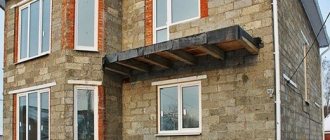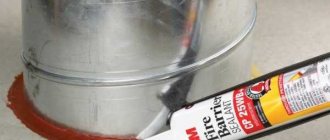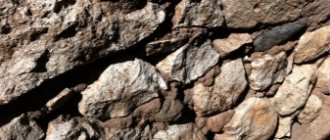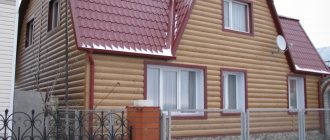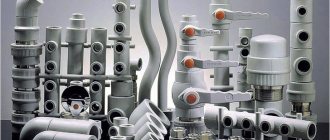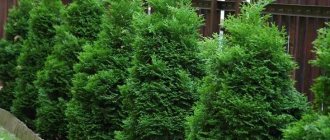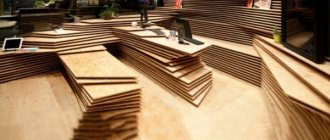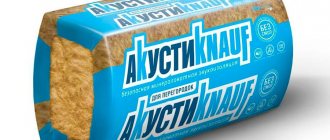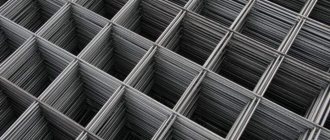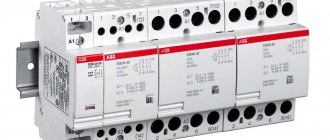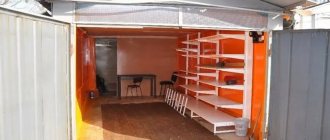A sandwich panel is a building material, the outer sides of which consist of a solid material, most often metal, and the inner side of insulation. They got their name because the layers resemble a sandwich (English sandwich ['sænwɪʤ]) - the same materials on the outside and one more on the inside. Sandwich panels were first used in 1930 in America during the construction of a residential building. Later, mass production of panels began. In the Russian Federation, this building material began to be produced in 1974, and it quickly occupied its niche in the construction market.
Where are sandwich panels used?
Sandwich panels were created in America in the 30s of the twentieth century. As for the domestic market, products appeared on it relatively recently. Despite this, their popularity is growing rapidly. What is the material used for:
- Construction of garages.
- Construction of garden houses.
- Construction of warehouses and industrial buildings.
- For decorative wall decoration.
Today, the material can be used to build cabins, kiosks and shops, as well as cinemas. They are used to insulate warehouses and finished structures. In addition, it is an excellent soundproofing material, suitable for creating interior partitions. Supermarkets, shopping centers, cottages and buildings whose height is no more than 2 floors are all created from panels.
Specific installation nuances
It should be remembered that to form a connection that provides strength and insulation along the joint line, you need to use only the methods specified by the manufacturer.
Most panels are latched or doweled together. The junction points with the metal frame are covered with damper tape.
For fastening to the rafter system, self-tapping screws are produced, the selection of which for construction and cladding takes into account the base material. The roof of the panels is fixed to the frame of the building through a mauerlat installed around the perimeter or a wooden block replacing it along a metal frame.
Fastening elements are selected not only taking into account the upcoming application and the type of base to which they are to be attached. The thickness of the panel must be taken into account, which is also taken into account when choosing shaped parts and additional elements for arranging wall cladding and constructing insulated attic roofs.
Types of sandwich panels according to purpose criteria
Based on the criterion of functional purpose, the following types of panels are distinguished:
- wall;
- roofing
Sandwich panels, classified as wall panels, are used in the construction of buildings for various purposes (warehouse, industrial, administrative, retail and others). In addition, they can be used in the construction of low-rise residential buildings and refrigerators. When carrying out the above work, horizontal and vertical, as well as inclined, enclosing structures are assembled from products.
Another way to use wall sandwich panels is the construction of enclosing structures (both internal and external), as well as flooring and interfloor coverings. In addition, these materials are often used for the reconstruction of buildings.
Roofing sandwich panels, as their name suggests, are used in the construction of roofs. We can talk about the construction of buildings and structures of various types.
A separate group is formed by modern sandwich panels of element-by-element assembly.
They use highly efficient insulation, which is complemented by a profile made of galvanized cold-rolled steel with a polymer coating. In addition, a wind and water protection system is provided, which makes the structures resistant to the most extreme climatic influences. Varieties of element-by-element assembly are attractive not only for their resistance to wind and precipitation, but also for their good noise insulation, variability of configurations, maintainability and cost-effectiveness.
Types of sandwich plates
There are several signs by which types of decorative finishing are determined. They have different characteristics and features of use.
Purpose of products
There are three groups of materials, which are divided by purpose:
- For walls.
- For the roof.
- Angular.
The first option is products that are mounted vertically on the wall. The outer layer is made of metal with a protective polymer coating. The color range is wide. The sheets are connected using the Z-lock or tongue-and-groove locking system. Thanks to it, the sandwich panel connections are airtight and there are no cold bridges. The insulation inside is reliably protected from moisture.
Z-lock connection
Sandwich panel walls are warm, reliable and beautiful. To provide additional protection, the use of sealant, additional elements, polyurethane foam or construction tape is permitted.
Tongue-groove connection
Characteristics of wall products:
- length from 1.5 to 20 m;
- width from 1 m to 1.2 m;
- thickness from 50 to 300 mm;
- the thickness of the metal sheets is from 0.45 to 0.7 mm.
Roofing panels are practically no different from wall panels; the structure and composition are the same. The main difference is in the locking connection. Moisture will not penetrate under the roof and will not affect its structural elements. The profile of the panels is pronounced.
Since the roof is constantly exposed to UV rays, the sandwich panels are protected from such radiation and other aggressive influences. Anti-corrosion coating on the surface. Additional protection of joints is not required, since the products are finished.
Characteristics of roofing products:
- length from 1.5 to 20 m;
- width 1 m;
- thickness from 50 to 300 mm;
- sheet metal thickness from 0.45 to 0.7 mm.
Corner products have a narrow specialization. They are needed to protect the corners of buildings from moisture and give them a better look. Sandwich panels of this type are fastened to slopes.
Type of cladding used
For cladding sandwich panels the following can be used:
- Stainless steel or galvanized steel with a protective polymer coating.
- Combined materials. One of the sheets is replaced with cement-bonded particle boards and plasterboard. Such panels are used in the construction of partitions.
- PVC.
- Special paper, aluminum foil or polyester is used.
Type of insulation
It is the insulation layer that indicates the main parameters and features of the products. The products are made from mineral wool (MV), expanded polystyrene (EPS), polyurethane foam (PUF), polyisocyanurate foam (PIR).
Features of materials:
- Sandwich panels with MV (GOST 32603-2012). This heat insulator does not burn and is environmentally friendly. Good thermal conductivity coefficient. Disadvantages: heavy weight and fear of moisture. Panels filled with mineral wool are used to create fire-resistant structures, as they are made of non-combustible material - basalt fiber.
- Sandwich panels with PPS (GOST 15588-2014). The material does not harm humans and the environment. Not afraid of moisture and aggressive environments. Operation is simple. Another advantage is low cost. Disadvantage: poor fire resistance. Used for the construction of industrial and commercial buildings.
- Sandwich panels with polyurethane foam (GOST 23486-79). Fine-cell type heat insulator. It has the lowest thermal conductivity coefficient. True, the material burns. Has a high price.
- Sandwich panels with PIR (GOST 23486-79). Improved polyurethane foam, which is fire-resistant, is resistant to aggressive environments and sun rays. The thermal conductivity coefficient is low. The scope of use is varied.
Types of sandwich panels by type of cladding
Based on this criterion, several types of panels are distinguished.
With metal casing. Most often, it is made of thin sheet galvanized or stainless steel, which is protected by a polymer coating made of polyvinyl fluoride, plastisol, pural or polyester. In addition, fabric, paper, stainless steel or aluminum foil can be used as a covering. Metal sheets with different types of profiling are used - knurled, smooth, microwave-shaped or trapezoidal.
With sheathing made of plasterboard, plywood, fiberboard or CSP (cement-bonded particle board). One of the listed materials is used only on one side of the slab, while a sheet of metal is used on the other. Most often, such panels are used in the construction of internal partitions. They are convenient because you can place cable channels in them, into which, in turn, wiring is laid.
With PVC sheathing. In these varieties, there are rigid PVC sheets on the outside, and insulation between them (for example, polyurethane foam, extruded polystyrene foam or polystyrene foam). Products with PVC sheets are widely used in the manufacture of office partitions, windows and doors. In addition, they are used when finishing door and window slopes.
With paper lining. The paper in these varieties is supplemented with a layer of aluminum foil or polyethylene. Such panels are used for thermal insulation of building elements - walls, roofs, foundations and others. Varieties with paper sheathing impregnated with bitumen are very popular. This material does not allow steam to pass through, so condensation does not accumulate on the inside of the roof. Panels with bituminized paper are very often used in the construction of warehouse roofs. To reduce heat loss, you can use foil paper, which reflects infrared radiation into the room. Panels with paper sheathing have a relatively low weight, which allows saving on their transportation and installation.
Outer layer
Sandwich panels for windows, walls or roofs include an outer covering made of various materials. For construction, varieties are most often used that have galvanized metal sheets on both sides. Its thickness can vary from 0.7 to 0.5 mm. A polymer coating is applied to it. It protects the metal from various adverse environmental influences.
If the metal thickness is less than 0.45 mm, the use of the presented material is not recommended. Polyester is most often used as a protective layer. The marking of the panels in this case has the letters PE.
Panels with outer layers of PVC are used for windows. This is common practice when creating such materials. It is covered with a special protective film. After installation it is removed. This is a temporary coating that allows you to avoid the appearance of defects on the surface during installation.
Types of sandwich panels by type of polymer coating
There are varieties with several main coatings.
Polyester (designated PE). This coating is suitable for all climatic zones; it is recommended for structures constructed inside buildings. The thickness of the polyester coating is 25 microns, heat resistance is approximately 120°C. It has several advantages - good formability, hardness, affordability. Manufacturers make panels with a glossy and matte finish from polyester.
Plastisol. It contains polyvinyl chloride and plasticizers. To designate it, markings like PVC 200 are used, where the number indicates the thickness of the coating, expressed in microns. The advantages of plastisol coating are its applicability for both internal and external structures, resistance to mechanical damage, corrosion and rolling, and good formability.
Polydifluorionad (designated PDVF). The thickness of this coating is 25 microns, it is resistant to temperatures up to +120°C and temperatures down to -60°C. Such advantages as resistance to mechanical damage, aggressive substances and corrosion deserve attention.
Pural (indicated by Pural). The basis of this coating is polyurethane. It has an attractive matte-silky surface and is resistant to temperature changes, corrosive and aggressive substances, and ultraviolet radiation. Most often, panels with this coating are used outside buildings.
| Characteristics of polymer coatings of sandwich panels | ||||
| Polyester | Plastisol | Pural | Polyvinyl fluoride | |
| Coating thickness, microns | 25 | 175/200 | 50 | 25 |
| Maximum operating temperature, °C | +120 | +60 | +120 | +120 |
| Minimum processing temperature, оС | -10 | +10 | -15 | -10 |
| Surface | Smooth | Embossing | Smooth | Smooth |
| Preservation of appearance | ** | *** | **** | ***** |
| Min. bend radius | 3xt | 0xt | 1xt | 1xt |
| Corrosion resistance: - salt test, hours - water test, at least, hours | 500 1000 | 1000 1000 | 1000 1000 | 1000 1000 |
| UV resistance | **** | *** | **** | ***** |
| Resistance to mechanical damage | *** | ***** | **** | **** |
Decorative products for brick
Decorative panels imitating brickwork were created especially for exterior decoration. This type of paneling will transform your home. True, the price for such pleasure is high; not everyone can afford such material.
It is a self-supporting structure from which you can create industrial complexes, retail outlets, sports outlets and other buildings. The advantage is excellent appearance, strength, reliability and durability. The panels do not burn and have excellent soundproofing and thermal insulation characteristics. Resistance to wind load and compression is maximum.
Walls made from sandwich panels are light, warm, beautiful and durable. They have a unique design that allows you to decorate and insulate your home. There is insulation between the sheet materials. Thanks to this, the material has many advantages over other analogues. And even though it has not been on our market for so long, many people already know what it is and are actively using it in private construction and for other purposes.
Characteristics and features of building material
Wall panels are made from a variety of insulating materials, which are protected by rigid sheet materials. For this purpose, PVC, polyurethane foam, mineral wool, EPS (expanded polystyrene) are used. Regardless of the type, the products are suitable for cheap and quick construction. The sandwich panel is made of 3 layers. The top and bottom are protective; most often galvanized steel is used for it. It is protected from corrosion, resistant to temperature changes and reliable.
Between the protective sheets there is thermal insulation material. The main requirement for it is a low heat conductivity coefficient, moisture resistance and durability.
Which filler is better?
The weight of the sandwich panel will be minimal both when using mineral wool and expanded polystyrene. However, the difference between the presented fillers is significant.
Expanded polystyrene is made by adding gas to a synthetic base. It occupies 95-98% of the total mass. This allows you to obtain a lightweight, durable material. It has low thermal conductivity. However, this is an artificial material. It does not allow moisture to pass through well. This feature entails the development of fungus and increased humidity levels indoors. The building needs high-quality forced ventilation.
Mineral wool is a material that is safe for the environment and human health. It is lightweight and durable. This material absorbs sounds well and prevents heat loss. Vata promotes the formation of a healthy indoor microclimate. This is a non-flammable material, the use of which in the construction of walls and roofs is considered preferable.
Weight
The structural weight of sandwich panels directly depends on the type and thickness of the thermal insulation layer. In addition, the density of the insulation also plays a key role. For example, for mineral wool this figure is 110 kg/m2 , for polystyrene foam - 25 kg/m2 . Accordingly, subject to standard dimensions, the weight of wall sandwich panels with mineral wool can vary between 16-39 kg . Similar products, where foam is used as insulation, will weigh 12-17 kg .
For walls
| panel thickness according to insulation t, mm | cladding thickness, mm | panel weight, kg |
| 50 | 0,5 | 16,03 |
| 0,7 | 19,55 | |
| 80 | 0,5 | 19,7 |
| 0,7 | 23,22 | |
| 100 | 0,5 | 22,15 |
| 0,7 | 25,67 | |
| 120 | 0,5 | 24,6 |
| 0,7 | 28,12 | |
| 150 | 0,5 | 28,27 |
| 0,7 | 31,79 | |
| 175 | 0,5 | 31,34 |
| 0,7 | 34,86 | |
| 200 | 0,5 | 34,38 |
| 0,7 | 37,9 |
For roofing
The weight of roofing sandwich panels is 12-38 kilograms, depending on the thermal insulation layer used.
| panel thickness according to insulation t, mm | cladding thickness, mm | panel weight, kg |
| 50 | 0,5 | 17,4 |
| 0,7 | 21,16 | |
| 80 | 0,5 | 21,07 |
| 0,7 | 24,83 | |
| 100 | 0,5 | 23,52 |
| 0,7 | 27,28 | |
| 120 | 0,5 | 25,97 |
| 0,7 | 29,73 | |
| 150 | 0,5 | 29,64 |
| 0,7 | 33,4 | |
| 175 | 0,5 | 32,71 |
| 0,7 | 36,47 | |
| 200 | 0,5 | 35,75 |
| 0,7 | 39,51 |
2.4. Selection of span length depending on temperature
Due to the difference in temperatures between the outer and inner surfaces of metal sheets, swelling (warping) of the skins may occur in places of greatest stress. Most often this happens on the sunny side of buildings. Moreover, the temperature of the skin heated by the sun largely depends on the color and its reflectivity. All colors are conditionally divided into three groups with different properties (see table 12).
In order to avoid deformation of the metal skins of panels that are regularly exposed to the sun, it is necessary to limit the span length in such a way that the metal stress arising during operation is less than the maximum permissible values. The maximum span lengths for a continuous fastening scheme are indicated in Tables 13, 14.
Table 12. Groups of metal colors by reflectivity.
| Group | Reflectivity Rg, % | Maximum external skin temperature, °C | Some group colors (RAL) |
| 1 – very light colors | 75 — 90 | +55 | 1013, 1014, 1018, 7035, 9001, 9002, 9003, 9010, 9016 |
| 2 – light colors | 40 — 74 | +65 | 1002, 1024, 2001, 2004, 5012, 5021, 6011, 7004, 7032 |
| 3 – dark colors | 8 — 39 | +80 | 3003, 5005, 6002, 6010, 7016, 8004, 8011, 8014, 8017, 9000 |
Table 13. Maximum span lengths of wall sandwich panels
| Panel thickness (based on insulation), mm | Exterior color group | ||
| 1 | 2 | 3 | |
| 50 | 2,60 | 2,05 | 1,75 |
| 80 | 3,35 | 2,50 | 2,15 |
| 100 | 3,75 | 2,80 | 2,30 |
| 120 | 4,10 | 3,15 | 2,65 |
| 150 | 4,50 | 3,50 | 2,95 |
| 180 | 4,90 | 3,80 | 3,20 |
| 200 | 5,20 | 4,05 | 3,35 |
Table 14. Maximum span lengths of roofing sandwich panels
| Panel thickness (based on insulation), mm | Exterior color group | ||
| 1 | 2 | 3 | |
| 50 | 2,80 | 2,20 | 1,90 |
| 80 | 3,65 | 2,85 | 2,40 |
| 100 | 4,10 | 3,10 | 2,80 |
| 120 | 4,40 | 3,40 | 2,90 |
| 150 | 4,95 | 3,75 | 3,15 |
| 180 | 5,50 | 4,20 | 3,50 |
| 200 | 5,70 | 4,40 | 3,75 |
Wall sandwich panels: dimensions
The data is given for wall panels with mineral wool insulation,
with a density of
110 kg/m³ and metal sheets with a thickness of 0.5 - 0.7 mm.
| Standard panel thickness [mm] | Width over facing [mm] | Panel length [mm] | Specific gravity of sandwich panel [kg/m²] | ||
| 0,5 | 0,6 | 0,7 | |||
| 50 | 1206 (mounting width - 1190) | 1800 — 13000 | 14,61 | 16,26 | 17,93 |
| 80 | 17,91 | 19,56 | 21,23 | ||
| 100 | 20,11 | 21,76 | 23,43 | ||
| 120 | 22,30 | 23,96 | 25,62 | ||
| 150 | 25,61 | 27,26 | 28,93 | ||
| 170 | 27,81 | 29,46 | 31,13 | ||
| 200 | 31,11 | 32,76 | 34,43 | ||
The data is given for wall panels with polystyrene foam insulation,
with a density of
25 kg/m³ and metal sheets with a thickness of 0.5 - 0.7 mm.
| Standard panel thickness [mm] | Width over facing [mm] | Panel length [mm] | Specific gravity of sandwich panel [kg/m²] | ||
| 0,5 | 0,6 | 0,7 | |||
| 50 | 1206 (installation width - 1190) | 1800 — 13000 | 10,36 | 12,01 | 13,68 |
| 80 | 11,11 | 12,76 | 14,43 | ||
| 100 | 11,61 | 13,26 | 14,93 | ||
| 120 | 12,11 | 13,76 | 15,43 | ||
| 150 | 12,86 | 14,51 | 16,18 | ||
| 170 | 13,30 | 15,01 | 16,68 | ||
| 200 | 14,11 | 15,76 | 17,43 | ||
The data is given for wall panels with polyurethane foam (PUR) insulation, density 40 - 42 kg/m³ and metal sheets 0.5 - 0.7 mm thick.
| Standard panel thickness [mm] | Width over facing [mm] | Panel length [mm] |
| 40 | 1185 (installation width - 1190) | 1800 — 13000 |
| 50 | ||
| 60 | ||
| 80 | ||
| 100 | ||
| 120 | ||
| 150 | ||
| 200 |
The data is given for wall panels with polyisocyanurate foam (PIR) insulation, density 40 - 50 kg/m³ and metal sheets 0.5 - 0.7 mm thick.
| Standard panel thickness [mm] | Width over facing [mm] | Panel length [mm] |
| 40 | 1185 (installation width - 1190) | 1800 — 13000 |
| 50 | ||
| 60 | ||
| 80 | ||
| 100 | ||
| 120 | ||
| 150 | ||
| 200 |
Manufacturers of sandwich panel equipment set the dimensions of sandwich panels based on the size of the raw material - profiled metal sheet.
Manufacturers of the sheet chose a size of 1250 mm in width, based on transportation standards, namely the maximum width of the Eurotruck body - 2450 mm.
In a standard Euro truck with a body width of 2450 mm , the width accommodates two rows of pallets of sandwich panels.
Roofing sandwich panels: dimensions
The data is given for roofing panels with mineral wool insulation, density 130 kg/m³ and metal sheets with a thickness of 0.6 and 0.7 mm.
| Standard panel thickness [mm] | Width over facing [mm] | Panel length [mm] | Specific gravity of sandwich panel [kg/m²] | |
| 0,6 | 0,7 | |||
| 50 | 1084 (mounting width - 1000) | 1800 — 13000 | 18,34 | 20,18 |
| 80 | 22,24 | 24,08 | ||
| 100 | 24,84 | 26,68 | ||
| 120 | 27,44 | 29,28 | ||
| 150 | 31,34 | 33,18 | ||
| 170 | 33,94 | 35,78 | ||
| 200 | 37,84 | 39,68 | ||
The data is given for roofing panels with polystyrene foam insulation, density 25 kg/m³ and metal sheets with a thickness of 0.6 and 0.7 mm.
| Standard panel thickness [mm] | Width over facing [mm] | Panel length [mm] | Specific gravity of sandwich panel [kg/m²] | |
| 0,6 | 0,7 | |||
| 50 | 1084 (mounting width - 1000) | 1800 — 13000 | 13,09 | 14,93 |
| 80 | 13,84 | 15,68 | ||
| 100 | 14,34 | 16,18 | ||
| 120 | 14,84 | 16,68 | ||
| 150 | 15,59 | 17,43 | ||
| 170 | 16,09 | 17,93 | ||
| 200 | 16,84 | 18,68 | ||
The data is given for roofing panels with polyurethane foam (PUR) insulation, density 40 - 42 kg/m³ and metal sheets 0.5 - 0.7 mm thick.
| Standard panel thickness [mm] | Width over facing [mm] | Panel length [mm] |
| 40 | 1000 | 1500 — 13000 |
| 60 | ||
| 80 | ||
| 100 | ||
| 120 | ||
| 150 |
The data is given for roofing panels with polyisocyanurate foam (PIR) insulation, density 40 - 50 kg/m³ and metal sheets 0.5 - 0.7 mm thick.
| Standard panel thickness [mm] | Width over facing [mm] | Panel length [mm] |
| 40 | 1000 | 1500 — 13000 |
| 60 | ||
| 80 | ||
| 100 | ||
| 120 | ||
| 150 |
Due to its deeper profile, a roofing sandwich panel always has shorter width compared to a wall sandwich panel.
2.5. Thermal conductivity
The calculation of thermal insulation characteristics is regulated by the following documents:
— SNiP 02/23/2003 “Thermal protection of buildings”,
— SNiP 23-01-99 “Building climatology”,
— STO 00044807-001-2006 “Thermal protection properties of building envelopes”,
— SNiP II-3-79 “Construction heating engineering”,
— SP 23-101-2000 “Design of thermal protection of buildings.”
Table 15. Thermal insulation characteristics of wall and roof sandwich panels.
| Panel thickness, mm | Wall panels, sq.m°C/W | Roofing panels, sq.m°C/W | ||
| Mineral wool | Expanded polystyrene | Mineral wool | Expanded polystyrene | |
| 50 | 1,16 | 1,28 | — | — |
| 60 | 1,40 | 1,54 | 1,40 | 1,54 |
| 80 | 1,86 | 2,05 | 1,86 | 2,05 |
| 100 | 2,33 | 2,56 | 2,33 | 2,56 |
| 120 | 2,79 | 3,08 | 2,79 | 3,08 |
| 150 | 3,49 | 3,85 | 3,49 | 3,85 |
| 180 | 4,19 | 4,62 | 4,19 | 4,62 |
| 200 | 4,65 | 5,13 | 4,65 | 5,13 |
| 250 | 5,81 | 6,41 | 5,81 | 6,41 |
Table 16. Minimum thickness of wall and roof sandwich panels in regional and regional centers of Russia by building groups.
| № | City of Russia | GSOP | Building type | Wall sandwich panels | Roof sandwich panels | ||||
| Normalized heat transfer value | Panel thickness, mm | Normalized heat transfer value | Panel thickness, mm | ||||||
| Min.cotton wool | PSB-S | Min.cotton wool | PSB-S | ||||||
| 1 | Astrakhan | 3874 | 1 | 2,76 | 150 | 120 | 4,14 | 200 | 200 |
| 3540 | 2 | 2,36 | 120 | 100 | 3,15 | 150 | 150 | ||
| 3206 | 3 | 1,77 | 80 | 80 | 2,47 | 120 | 120 | ||
| 2 | Barnaul | 6564 | 1 | 3,7 | 200 | 180 | 5,48 | 300 | 300 |
| 6122 | 2 | 3,17 | 180 | 150 | 4,23 | 200 | 200 | ||
| 5680 | 3 | 2,31 | 120 | 100 | 3,14 | 150 | 150 | ||
| 3 | Vladivostok | 5076 | 1 | 3,18 | 180 | 150 | 4,74 | 250 | 250 |
| 4684 | 2 | 2,72 | 150 | 120 | 3,63 | 200 | 180 | ||
| 4292 | 3 | 2,02 | 100 | 80 | 2,77 | 150 | 120 | ||
| 4 | Volgograd | 4308 | 1 | 2,91 | 150 | 150 | 4,35 | 250 | 200 |
| 3952 | 2 | 2,49 | 120 | 120 | 3,32 | 180 | 180 | ||
| 3596 | 3 | 1,86 | 100 | 80 | 2,58 | 120 | 120 | ||
| 5 | Voronezh | 4920 | 1 | 3,12 | 180 | 150 | 4,66 | 250 | 250 |
| 4528 | 2 | 2,68 | 150 | 120 | 3,57 | 200 | 180 | ||
| 4136 | 3 | 1,98 | 100 | 80 | 2,73 | 150 | 120 | ||
| 6 | Ekaterinburg | 6440 | 1 | 3,65 | 200 | 180 | 5,42 | 300 | 300 |
| 5980 | 2 | 3,13 | 180 | 150 | 4,18 | 200 | 200 | ||
| 520 | 3 | 2,29 | 120 | 100 | 3,11 | 150 | 150 | ||
| 7 | Izhevsk | 6127 | 1 | 3,54 | 200 | 180 | 5,26 | 300 | 250 |
| 5683 | 2 | 3,04 | 150 | 150 | 4,05 | 200 | 180 | ||
| 5239 | 3 | 2,23 | 120 | 100 | 3,03 | 150 | 150 | ||
| 8 | Irkutsk | 7320 | 1 | 3,96 | 200 | 200 | 5,86 | 300 | 300 |
| 6840 | 2 | 3,4 | 180 | 180 | 4,53 | 250 | 200 | ||
| 6360 | 3 | 2,46 | 120 | 120 | 3,33 | 180 | 180 | ||
| 9 | Kazan | 5848 | 1 | 3,45 | 180 | 180 | 5,12 | 300 | 250 |
| 5418 | 2 | 2,95 | 150 | 150 | 3,94 | 200 | 200 | ||
| 4988 | 3 | 2,17 | 100 | 100 | 2,96 | 150 | 150 | ||
| 10 | Kemerovo | 6999 | 1 | 3,85 | 200 | 180 | 5,7 | 300 | 300 |
| 6537 | 2 | 3,3 | 180 | 150 | 4,4 | 250 | 200 | ||
| 6075 | 3 | 2,4 | 120 | 120 | 3,25 | 170 | 150 | ||
| 11 | Krasnodar | 2980 | 1 | 2,44 | 120 | 120 | 3,69 | 200 | 180 |
| 2682 | 2 | 2,09 | 100 | 100 | 2,79 | 150 | 120 | ||
| 2384 | 3 | 1,6 | 80 | 80 | 2,25 | 120 | 100 | ||
| 12 | Krasnoyarsk | 6809 | 1 | 3,78 | 200 | 180 | 5,6 | 300 | 300 |
| 6341 | 2 | 3,24 | 180 | 150 | 4,32 | 250 | 200 | ||
| 5873 | 3 | 2,36 | 120 | 100 | 3,2 | 180 | 150 | ||
| 13 | Lipetsk | 5131 | 1 | 3,2 | 180 | 180 | 4,77 | 250 | 250 |
| 4727 | 2 | 2,74 | 150 | 150 | 3,65 | 200 | 180 | ||
| 4323 | 3 | 2,03 | 100 | 100 | 2,78 | 150 | 120 | ||
| 14 | Makhachkala | 2856 | 1 | 2,4 | 120 | 120 | 3,63 | 200 | 180 |
| 2560 | 2 | 2,06 | 100 | 100 | 2,74 | 150 | 120 | ||
| 2264 | 3 | 1,57 | 80 | 80 | 2,21 | 120 | 100 | ||
| 15 | Moscow | 5371 | 1 | 3,28 | 180 | 180 | 4,89 | 250 | 250 |
| 4943 | 2 | 2,81 | 150 | 150 | 3,75 | 200 | 180 | ||
| 4515 | 3 | 2,07 | 100 | 100 | 2,84 | 150 | 120 | ||
| 16 | Naberezhnye Chelny | 5913 | 1 | 3,47 | 180 | 180 | 5,16 | 300 | 250 |
| 5483 | 2 | 2,97 | 150 | 150 | 3,97 | 200 | 200 | ||
| 5053 | 3 | 2,18 | 100 | 100 | 2,98 | 150 | 150 | ||
| 17 | Nizhny Novgorod | 5612 | 1 | 3,36 | 180 | 180 | 5,01 | 300 | 250 |
| 5182 | 2 | 2,88 | 150 | 150 | 3,84 | 200 | 200 | ||
| 4752 | 3 | 2,12 | 100 | 100 | 2,9 | 150 | 150 | ||
| 18 | Novokuznetsk | 6651 | 1 | 3,73 | 200 | 200 | 5,53 | 300 | 300 |
| 6197 | 2 | 3,2 | 180 | 180 | 4,26 | 230 | 200 | ||
| 5743 | 3 | 2,33 | 120 | 120 | 3,16 | 180 | 150 | ||
| 19 | Novosibirsk | 7061 | 1 | 3,87 | 200 | 200 | 5,73 | 300 | 300 |
| 6601 | 2 | 3,32 | 180 | 180 | 4,42 | 250 | 200 | ||
| 6141 | 3 | 2,41 | 120 | 120 | 3,27 | 180 | 150 | ||
| 20 | Oymyakon | 13242 | 1 | 6,03 | 300 | 300 | 8,82 | — | — |
| 12670 | 2 | 5,17 | 300 | 250 | 6,9 | — | 300 | ||
| 12098 | 3 | 3,65 | 200 | 180 | 4,81 | 250 | 250 | ||
| 21 | Omsk | 6718 | 1 | 3,75 | 200 | 180 | 5,56 | 300 | 300 |
| 6276 | 2 | 3,22 | 180 | 150 | 4,29 | 250 | 200 | ||
| 5834 | 3 | 2,34 | 120 | 100 | 3,18 | 180 | 150 | ||
| 22 | Orenburg | 5717 | 1 | 3,4 | 180 | 180 | 5,06 | 300 | 250 |
| 5313 | 2 | 2,91 | 150 | 150 | 3,89 | 200 | 200 | ||
| 4909 | 3 | 2,14 | 100 | 100 | 2,93 | 150 | 150 | ||
| 23 | Penza | 5450 | 1 | 3,31 | 180 | 150 | 4,92 | 250 | 250 |
| 5034 | 2 | 2,83 | 150 | 120 | 3,78 | 200 | 180 | ||
| 4618 | 3 | 2,09 | 100 | 100 | 2,86 | 150 | 150 | ||
| 24 | Permian | 6389 | 1 | 3,64 | 200 | 180 | 5,39 | 300 | 300 |
| 5931 | 2 | 3,12 | 180 | 150 | 4,16 | 250 | 200 | ||
| 5473 | 3 | 2,28 | 120 | 100 | 3,1 | 180 | 150 | ||
| 25 | Rostov-on-Don | 3865 | 1 | 2,75 | 150 | 120 | 4,13 | 200 | 200 |
| 3523 | 2 | 2,36 | 120 | 100 | 3,15 | 180 | 150 | ||
| 3181 | 3 | 1,77 | 80 | 80 | 2,47 | 120 | 120 | ||
| 26 | Ryazan | 5304 | 1 | 3,26 | 180 | 150 | 4,85 | 250 | 250 |
| 4888 | 2 | 2,79 | 150 | 120 | 3,72 | 200 | 180 | ||
| 4472 | 3 | 2,06 | 100 | 100 | 2,83 | 150 | 120 | ||
| 27 | Samara | 5522 | 1 | 3,33 | 180 | 150 | 4,96 | 250 | 250 |
| 5116 | 2 | 2,86 | 150 | 120 | 3,81 | 200 | 180 | ||
| 4710 | 3 | 2,1 | 100 | 100 | 2,88 | 150 | 150 | ||
| 28 | Saint Petersburg | 5236 | 1 | 3,23 | 180 | 150 | 4,82 | 250 | 250 |
| 4796 | 2 | 2,77 | 150 | 120 | 3,69 | 200 | 180 | ||
| 4356 | 3 | 2,05 | 100 | 100 | 2,81 | 150 | 120 | ||
| 29 | Saratov | 5155 | 1 | 3,2 | 180 | 150 | 4,78 | 250 | 250 |
| 4763 | 2 | 2,75 | 150 | 120 | 3,66 | 200 | 180 | ||
| 4371 | 3 | 2,03 | 100 | 100 | 2,79 | 150 | 120 | ||
| 30 | Tolyatti | 5522 | 1 | 3,33 | 180 | 180 | 4,96 | 300 | 250 |
| 5116 | 2 | 2,86 | 150 | 150 | 3,81 | 200 | 200 | ||
| 4710 | 3 | 2,1 | 100 | 100 | 2,88 | 150 | 150 | ||
| 31 | Tomsk | 7174 | 1 | 3,91 | 200 | 200 | 5,79 | 300 | 300 |
| 6702 | 2 | 3,35 | 180 | 180 | 4,47 | 250 | 200 | ||
| 6230 | 3 | 2,43 | 120 | 120 | 3,29 | 180 | 180 | ||
| 32 | Tyumen | 6570 | 1 | 3,7 | 200 | 180 | 5,49 | 300 | 300 |
| 6120 | 2 | 3,17 | 180 | 150 | 4,23 | 200 | 200 | ||
| 5670 | 3 | 2,31 | 120 | 100 | 3,14 | 180 | 150 | ||
| 33 | Ulyanovsk | 5809 | 1 | 3,43 | 180 | 180 | 5,1 | 300 | 250 |
| 5385 | 2 | 2,94 | 150 | 150 | 3,92 | 200 | 200 | ||
| 4961 | 3 | 2,16 | 100 | 100 | 2,95 | 150 | 150 | ||
| 34 | Ufa | 5943 | 1 | 3,48 | 180 | 180 | 5,17 | 300 | 250 |
| 5517 | 2 | 2,98 | 150 | 150 | 3,98 | 200 | 200 | ||
| 5091 | 3 | 2,19 | 100 | 100 | 2,99 | 150 | 150 | ||
| 35 | Khabarovsk | 6604 | 1 | 3,71 | 200 | 180 | 5,5 | 300 | 300 |
| 6182 | 2 | 3,18 | 180 | 150 | 4,24 | 250 | 200 | ||
| 5760 | 3 | 2,32 | 120 | 100 | 3,15 | 180 | 150 | ||
| 36 | Chelyabinsk | 6213 | 1 | 3,57 | 200 | 180 | 5,31 | 300 | 250 |
| 5777 | 2 | 3,06 | 150 | 150 | 4,09 | 200 | 200 | ||
| 5341 | 3 | 2,24 | 100 | 100 | 3,05 | 180 | 150 | ||
| 37 | Yaroslavl | 5746 | 1 | 3,41 | 180 | 180 | 5,07 | 300 | 250 |
| 5304 | 2 | 2,92 | 150 | 150 | 3,9 | 200 | 200 | ||
| 4862 | 3 | 2,15 | 100 | 100 | 2,94 | 180 | 150 | ||
Characteristics of insulation. Sound insulation of sandwich panels
The thermal insulation properties and fire resistance of sandwich panels depend on the insulation used. Sound insulation depends on the thickness of the panels.
Therefore, the choice of insulation should be based on:
- fire safety requirements for the building - for example, administrative and residential buildings are built only from panels with mineral wool insulation;
- purpose of the building - in the construction of refrigeration and freezing chambers, polyurethane foam or polyisocyanurate foam is used;
- economic feasibility - in terms of price/quality ratio, the optimal choice is polystyrene foam as an advantageous lightweight and warm insulation.
Characteristics of sandwich panels with mineral wool insulation
| Thickness, mm | Thermal resistance Rt=m2×°C/W | Sound insulation, dB | Thermal conductivity λ=W/Mk | Fire resistance limit, GOST 30247.0-94 | Flammability of insulation | Density, kg/m3 | Water absorption in 24 hours, % by weight | Water absorption for 2 hours, % by weight |
| 50 | 1,04 | 30 | 0,05 | EI 30 | NG | 120-140 | — | 1,5 |
| 80 | 1,67 | 31 | 0,05 | EI 45 | NG | 120-140 | — | 1,5 |
| 100 | 2,08 | 32 | 0,05 | EI 90 | NG | 120-140 | — | 1,5 |
| 120 | 2,5 | 33 | 0,05 | EI 150 | NG | 120-140 | — | 1,5 |
| 150 | 3,13 | 35 | 0,05 | EI 180 | NG | 120-140 | — | 1,5 |
| 200 | 4,14 | 38 | 0,05 | EI 180 | NG | 120-140 | — | 1,5 |
| 250 | 5,21 | 43 | 0,05 | EI 180 | NG | 120-140 | — | 1,5 |
*Flammability group NG is assigned to non-combustible materials (GOST 30244)
*Fire resistance from EI 30 to EI 150 – degradation of integrity under high temperature (fire) exposure for 30 to 150 minutes; It is allowed to use panels for all fire resistance categories of buildings
Characteristics of sandwich panels with polystyrene foam insulation
| Thickness, mm | Thermal resistance Rt=m2×°C/W | Sound insulation, dB | Thermal conductivity λ=W/Mk | Fire resistance limit, GOST 30247.0-94 | Flammability of insulation | Density, kg/m3 | Water absorption in 24 hours, % by weight | Water absorption for 2 hours, % by weight |
| 50 | 1,28 | 25 | 0,042 | EI 15 | G1 | 25 | 2 | — |
| 80 | 2,05 | 28 | 0,042 | EI 15 | G1 | 25 | 2 | — |
| 100 | 2,56 | 29 | 0,042 | EI 15 | G1 | 25 | 2 | — |
| 120 | 3,08 | 31 | 0,042 | EI 15 | G1 | 25 | 2 | — |
| 150 | 3,85 | 33 | 0,042 | EI 15 | G1 | 25 | 2 | — |
| 200 | 5,13 | 35 | 0,042 | EI 15 | G1 | 25 | 2 | — |
| 250 | 6,41 | 39 | 0,042 | EI 15 | G1 | 25 | 2 | — |
*Flammability group G1 is assigned to low-flammable materials (GOST 30244)
*Fire resistance EI 15 – degradation of integrity under high temperature (fire) exposure for 15 minutes; It is allowed to use panels from 2 to 5 categories of fire resistance of buildings.
Characteristics of sandwich panels with polyurethane foam/polyisocyanurate foam insulation
| Thickness, mm | Thermal resistance Rt=m2×°C/W | Sound insulation, dB | Thermal conductivity λ=W/Mk | Fire resistance limit, GOST 30247.0-94 | Flammability of insulation | Density, kg/m3 | Water absorption in 24 hours, % by weight | Water absorption for 2 hours, % by weight |
| 50 | 2,38 | 30 | 0,022 | EI 15/EI 15 | G4/G2 | 41 | 1,6 | — |
| 80 | 3,81 | 31 | 0,022 | EI 15/EI 30 | G4/G2 | 41 | 1,6 | — |
| 100 | 4,76 | 32 | 0,022 | EI 15/EI 30 | G4/G2 | 41 | 1,6 | — |
| 120 | 5,71 | 33 | 0,022 | EI 15/EI 30 | G4/G2 | 41 | 1,6 | — |
| 150 | 7,14 | 35 | 0,022 | EI 15/EI 45 | G4/G2 | 41 | 1,6 | — |
| 200 | 9,52 | 35 | 0,022 | EI 15/EI 45 | G4/G2 | 41 | 1,6 | — |
*Flammability group G2 is assigned to moderately flammable materials (GOST 30244)
*Fire resistance from EI 15 to EI 45 – degradation of integrity under high temperature (fire) exposure for 15 to 45 minutes; It is allowed to use panels from 2 to 5 categories of fire resistance of buildings.
2.2. Soundproofing
Table 9. Sound insulation characteristics of wall and roof sandwich panels with mineral wool insulation.
| Sandwich panel thickness, mm | Rw (wall panels), dB | Ra (wall panels), dB | Ra (roofing panels), db |
| 50 | 32 | 29 | — |
| 80 | 32 | 29 | — |
| 100 | 35 | 30 | 31 |
| 120 | 35 | 30 | 31 |
| 150 | 35 | 30 | 32 |
| 200 | 35 | 30 | — |
Rw – airborne noise insulation, is a standardized parameter for the sound insulation of internal enclosing structures of residential and public buildings, as well as auxiliary buildings of industrial enterprises.
Ra – which represents the insulation of external noise produced by the flow of urban traffic, is a standardized parameter for the sound insulation of external enclosing structures.
Standardized parameters are regulated:
— SP 51.13330.2011 “Protection from noise”,
— SNiP 03/23/2003 “Protection from noise”,
— SP 23-103-2003 “Design of sound insulation of enclosing structures of residential and public buildings”,
— GOST 27296-87 (ST SEV 4866-84) “Noise protection in construction. Sound insulation of enclosing structures. Measurement methods".
Load-bearing capacity of MetalProm sandwich panels
When installed correctly and subject to proper operating conditions, MetalProm sandwich panels can withstand the following loads indicated in the tables.
Load-bearing capacity of roofing sandwich panels
| Panel thickness, mm | Load-bearing capacity of roofing sandwich panels under uniform load, kgf/m2 | Support width, mm | ||||||
| Span length, m | extreme | average | ||||||
| 1.0 | 1.5 | 2.0 | 2.5 | 3.0 | 3.5 | |||
| Filler – basalt mineral wool “ROCKWOOL” | ||||||||
| 50 | 421 | 274 | 201 | 142 | 87 | 55 | 60 | 80 |
| 60 | 507 | 331 | 243 | 161 | 102 | 67 | ||
| 80 | 681 | 446 | 328 | 200 | 133 | 92 | ||
| 100 | 854 | 560 | 378 | 239 | 164 | 119 | ||
| 120 | 1027 | 675 | 426 | 279 | 194 | 143 | 90 | |
| 150 | 1287 | 840 | 503 | 336 | 243 | 184 | 100 | |
| 200 | 1719 | 968 | 570 | 436 | 324 | 252 | 110 | |
| 250 | 2152 | 1141 | 698 | 476 | 382 | 320 | 120 | |
| 300 | 2586 | 1314 | 826 | 589 | 398 | 337 | 130 | |
| Filler – self-extinguishing polystyrene foam with fire retardants | ||||||||
| 50 | 403 | 244 | 156 | 118 | 87 | 75 | 60 | 80 |
| 60 | 504 | 310 | 213 | 155 | 117 | 106 | ||
| 80 | 812 | 530 | 372 | 277 | 215 | 181 | ||
| 100 | 911 | 618 | 469 | 357 | 280 | 225 | ||
| 120 | 1071 | 728 | 553 | 437 | 346 | 335 | 90 | |
| 150 | 1231 | 903 | 671 | 528 | 433 | 364 | 100 | |
| 200 | 1462 | 984 | 731 | 576 | 471 | 397 | 110 | |
| 250 | 1579 | 1063 | 791 | 623 | 510 | 429 | 120 | |
| 300 | 1694 | 1140 | 849 | 669 | 548 | 461 | 130 | |
Load-bearing capacity of wall sandwich panels
| Panel thickness, mm | Load-bearing capacity of roofing sandwich panels under uniform load, kgf/m2 | Support width, mm | ||||||||||
| Span length, m | extreme | average | ||||||||||
| 1.5 | 2.0 | 2.5 | 3.0 | 3.5 | 4.0 | 4.5 | 5.0 | 5.5 | 6.0 | |||
| Filler – basalt mineral wool “ROCKWOOL” | ||||||||||||
| 50 | 405 | 291 | 228 | 123 | 84 | 53 | 33 | — | — | — | 60 | 60 |
| 60 | 417 | 301 | 231 | 146 | 127 | 91 | 62 | 40 | — | — | ||
| 80 | 443 | 325 | 260 | 159 | 138 | 112 | 100 | 87 | 71 | 50 | ||
| 100 | 464 | 346 | 275 | 176 | 157 | 136 | 127 | 106 | 91 | 78 | ||
| 120 | 505 | 370 | 292 | 207 | 168 | 150 | 143 | 123 | 110 | 95 | 70 | |
| 150 | 569 | 413 | 322 | 263 | 183 | 160 | 152 | 136 | 125 | 95 | 80 | |
| 200 | 663 | 488 | 386 | 303 | 216 | 185 | 178 | 164 | 151 | 127 | 100 | |
| 250 | 701 | 519 | 408 | 367 | 259 | 220 | 208 | 190 | 185 | 163 | 110 | |
| 300 | 748 | 544 | 428 | 413 | 312 | 284 | 261 | 223 | 208 | 189 | 120 | |
| Filler – self-extinguishing polystyrene foam with fire retardants | ||||||||||||
| 50 | 431 | 314 | 246 | 130 | 103 | 86 | 66 | 53 | 43 | 36 | 60 | 60 |
| 60 | 435 | 317 | 248 | 148 | 110 | 96 | 81 | 64 | 52 | 43 | ||
| 80 | 442 | 321 | 251 | 166 | 125 | 109 | 96 | 86 | 72 | 59 | ||
| 100 | 448 | 325 | 254 | 167 | 141 | 122 | 107 | 96 | 87 | 76 | ||
| 120 | 497 | 362 | 282 | 185 | 156 | 135 | 119 | 106 | 96 | 88 | 70 | |
| 150 | 548 | 399 | 312 | 212 | 179 | 155 | 136 | 122 | 110 | 100 | 80 | |
| 200 | 647 | 473 | 370 | 259 | 218 | 188 | 165 | 148 | 133 | 121 | 100 | |
| 250 | 699 | 512 | 401 | 306 | 258 | 222 | 195 | 174 | 157 | 143 | 110 | |
| 300 | 750 | 551 | 432 | 353 | 297 | 256 | 225 | 200 | 181 | 164 | 120 | |
*The thickness of the sandwich panel is assumed to be equal to the thickness of the insulation
*The thickness of the metal sheet of the panel is taken as 0.5 mm
*The permissible deflection for wall sandwich panels is L/150, for roofing panels – L/200
*Loads correspond to a two-span (multi-span) loading scheme
Maintaining characteristics over a long period of time and the durability of finished buildings made from MetalProm sandwich panels are ensured by the use of high-quality materials, advanced production technology and the use of sustainable polymer coatings. Competent installation, proper operation and proper control over the enclosing structures allow prefabricated buildings made from sandwich panels to serve for decades. Thanks to these properties, our products will satisfy even the most demanding needs of customers who want to work with us in the field of advanced construction.
Average prices
The price of sandwich panels directly depends on several parameters:
- Region of production.
- Qualitative characteristics.
- Application area.
- Material used for manufacturing.
- Single-layer or multi-layer.
- Protective coating.
The cost of a building product is also affected by the thickness of the structure. The larger it is, the correspondingly it is able to withstand maximum loads. At the same time, other quality indicators improve several times. Such as hygroscopicity, sound insulation, etc.
| Material | Thickness: 60 mm | Thickness: 80 mm | Thickness: 100 mm | Thickness: 120 mm | Thickness: 150 mm | Thickness: 200 mm |
| Pol/Pol + protective film | 1160 rub. sq. m | 1300 rub. sq. m | 1430 rub. sq. m | 1600 rub. sq. m | 1720 rub. sq. m | 1780 rub. sq. m |
| Pol/Zn + protective film | 1130 rub. sq. m | 1270 rub. sq. m | 1400 rub. sq. m | 1570 rub. sq. m | 1680 rub. sq. m | 1750 rub. sq. m |
| Znl/Zn + protective film | 1100 rub. sq. m | 1240 rub. sq. m | 1330 rub. sq. m | 1540 rub. sq. m | 1650 rub. sq. m | 1720 rub. sq. m |
| Pol/Paper | 950 rub. sq. m | 1100 rub. sq. m | 1230 rub. sq. m | 1400 rub. sq. m | 1500 rub. sq. m | 1570 rub. sq. m |
| Zn/Paper | 920 rub. sq. m | 1080 rub. sq. m | 1200 rub. sq. m | 1360 rub. sq. m | 1480 rub. sq. m | 1540 rub. sq. m |
| Paper/Paper | 750 rub. sq. m | 890 rub. sq. m | 1000 rub. sq. m | 1190 rub. sq. m | 1300 rub. sq. m | 1370 rub. sq. m |
It should be noted that today, the potential production volume of sandwich panels in Russia fully corresponds to consumer demand. Many class=”aligncenter” width=”504″ height=”369″[/img]
appreciated this product, including the convenient sizes of wall sandwich panels and their cost. Therefore, an annual increase in production by 20 - 25% is envisaged.
Advantages and disadvantages of sandwich panels
To understand whether to buy products for finishing or creating a room, you need to know the advantages and disadvantages of sandwich panels. Let's start with the positive aspects:
- Speed of construction work. The construction project can be completed in the shortest possible time.
- Affordable price, thanks to which everyone can afford the panels.
- Providing reliable mechanical protection along with high thermal insulation properties. Thus, the installation of wall sandwich panels will solve two problems.
- There is no need to additionally insulate the building, spend money, time and effort on work.
- The plates are small in size and weight. The load on the foundation of the house is not great, so there is no point in strengthening it and spending a lot of money. Buildings made from sandwich panels are quite simple to make.
- The installation technology does not require the presence of special construction equipment. The work is done manually.
- These are not only products for creating structures, but also materials for external decorative finishing of the facade, which allows you to save money without performing additional finishing.
- Products are protected from moisture, sunlight, rodents and other negative influences.
However, the products are not without drawbacks, like any other materials. They are as follows:
- low mechanical strength of finished structures made from sandwich panels. Although the metal protects the insulation, the building as a whole is poorly protected from mechanical loads;
- if you save on the quality of insulation, then its thermal insulation function is reduced to nothing;
- When finishing the interior of a room, you need to take into account the load on the wall panels. If it exceeds the norm, the wall will easily collapse.
Construction of buildings
Installing sandwich panels is a simple process. If desired, you can do it yourself. To do this, the customer chooses a project for the future building. Next, a structure is developed that will consist of a frame and panels.
For small country houses and utility rooms, you don’t need to create a foundation. It is still recommended to do it for residential premises, as well as shops, administrative and other facilities. Next, the frame is erected. It has holes for windows and doors. In accordance with the design, the panels are mounted on the frame using conventional lifting equipment. Fastening is performed using a certain technology.
If necessary, such a building can be expanded over time. To do this, the panels on one side of the wall are dismantled. Next, the frame is added. Additional sandwich panels are installed on it. The construction process will not take much time. A small country house can be created literally in one day.
Having considered the features of a sandwich panel, what it is, as well as the main characteristics and questions when choosing, everyone will be able to correctly apply the presented technology for their own purposes.
Sandwich panel installation work
In order for the work to be done efficiently, you need to approach it responsibly. This requires professional construction knowledge and skills. Ideally, resort to hiring workers who will do everything right. But if you wish, you can do the work yourself.
To work, you need to stock up on the following tools and materials:
- wall sandwich panel 100 mm or other thickness as desired;
- electric drill and screwdriver;
- building level;
- profile or metal corner;
- fine-tooth saw;
- plumb line;
- self-tapping screws for panels;
- grips;
- anchor bolts with gasket;
- self-adhesive tape;
- winch or similar mechanism;
- clamping devices;
- silicone sealant.
There are two types of installation of sandwich panels:
- Horizontally.
- Vertically.
As experience shows, it is better to resort to the second method if the house has a height of 3-6 m. The installation process is simple: you need to fasten the sandwich panels with self-tapping screws close to the roof and base. The panels are connected to each other using locks.
The horizontal type of installation is easier in terms of fixing the locks. You need to start the installation process from the base of the building. The products are attached to the frame along the edges.
Trusted manufacturers
Considering the popularity of sandwich panels, there are quite a lot of enterprises operating in Russia that have chosen the production of this building material as their specialization. Here are the TOP 5 verified companies.
- "Lissant" . The company began its activities in 2008 , and now has several production lines located in various regions of the country. The manufacturer uses only high-quality raw materials; the technological process is based on the use of Italian equipment. The company has repeatedly become a prize-winner of various competitions; its products are subject to mandatory quality certification according to ISO 9001 .
- Teplant LLC . The company was founded on the basis of the Kuibyshev enterprise for the production of mineral wool products. The production of sandwich panels was established in 2001 , and now it is one of the largest manufacturers in the Russian region, supplying the market with more than 6 million m2 annually.
- Vesta Park Group of Companies . The company's product range includes wall and roof sandwich panels of various colors. The company has multi-stage quality control, which has allowed the company to repeatedly become a nominee in all-Russian competitions.
- LLC TD "Stimet " The key advantage of the company is affordable prices for its products, while maintaining European quality. Sandwich panels from this manufacturer are equipped with standard and seam locking joints; mineral wool or expanded polystyrene is used as a thermal insulation layer.
- "Technostyle" . The company has been operating since 2008 , the company’s goal is to take a leading position in the Russian construction market. The company constantly tightens production quality control, modernizes technological processes and uses European equipment. At the same time, sandwich panels from this manufacturer are distinguished by affordable prices. The manufactured products fully comply with Russian and international quality standards.
It is worth noting that these are not the only manufacturers of sandwich panels in Russia, however, the most competitive companies whose products deserve the highest ratings from consumers are listed here.
Design
The name of this material more than eloquently speaks for itself, because translated from English “sandwich” means “multi-layer sandwich.” Like a sandwich, sandwich panels for walls have a three-layer structure and consist of rigid fencing sheets and a layer of insulation located between them.
As a rule, fencing sheets can be aluminum, MDF, OSB, profiled metal, plastic and magnesite. This design provides sandwich wall panels with enormous potential for durability, strength, light weight, ease of installation and low transportation costs.
High characteristics have ensured that sandwich wall panels have become quite popular and in demand in the construction of various types of structures. The manufacturing technology of this material is regulated by the current GOST.
